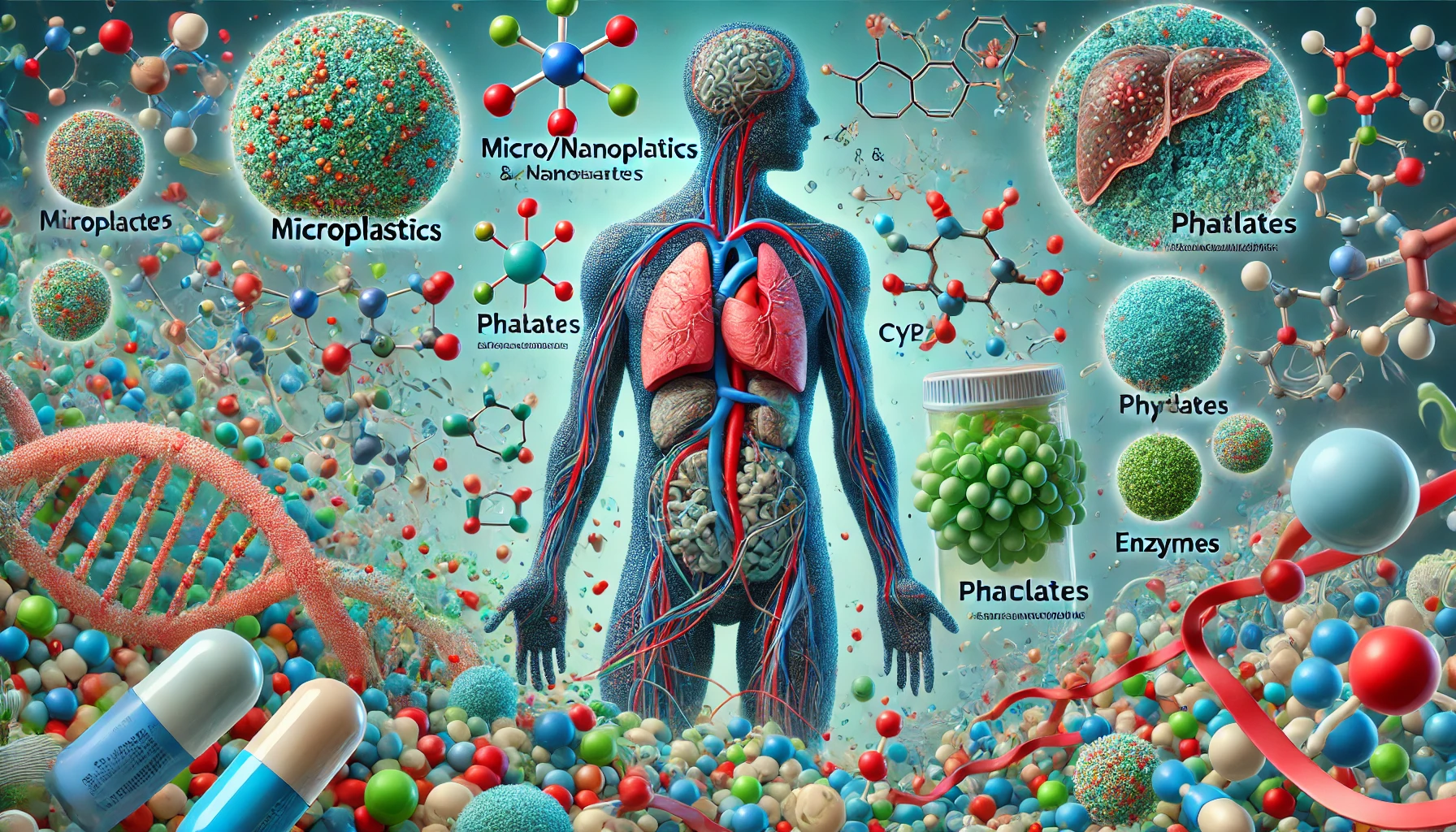Are Sex Toys Safe? New Study Warns of Chemical Risks and Health Impacts
A study from Saitama University highlights potential health risks from micro/nanoplastics and phthalates leached from sex toys, which could disrupt immune and hormonal functions. Further research and stricter regulations are needed to ensure consumer safety.

A recent study published in "Hygiene and Environmental Health Advances" has shed light on the potential health risks associated with the use of sex toys, specifically focusing on the leaching of micro/nanoplastics (M/NPs) and phthalates from these products. The research was conducted by scientists at the Graduate School of Science and Engineering, Saitama University, and utilized in silico toxicity simulations to explore how these chemicals interact with critical enzymes in the human body. The enzymes, CYP34A and CYP2D6, play significant roles in drug metabolism and immune system regulation. The study investigated four types of M/NPs—polyethylene terephthalate (PET), polyvinyl chloride (PVC), polydimethylsiloxane (PDMS), and polyisoprene alongside eight types of phthalates, including diethyl phthalate (DEP) and benzyl butyl phthalate (BBP), all commonly found in sex toys.
The findings from molecular docking and dynamics simulations indicated that PET and BBP exhibited the highest toxicity levels, showing strong binding affinities with the enzymes. This suggests these compounds have the potential to interfere with immune system function and disrupt the normal metabolic processes of the human body. PET, in particular, demonstrated the most significant toxicity, with binding affinities of -8.3 kcal/mol for CYP3A4 and -8.9 kcal/mol for CYP2D6, surpassing the control values. These strong interactions imply a risk of disrupting the enzymes' functions, which could result in immune system malfunctions. On the other hand, PDMS, a silicone-based compound, was found to be the least toxic among the materials analyzed, with the lowest binding affinity to the enzymes, making it a comparatively safer option for sex toy production.
Preliminary Findings Show Cause for Concern
Despite the insightful findings of this study, the researchers emphasized that the results are preliminary, primarily based on computational simulations. They stressed the need for more comprehensive chemical analyses and real-world absorption studies to validate the potential health risks posed by M/NPs and phthalates in sex toys. The study points out that while sex toys do not intentionally contain M/NPs, these plastic particles can be mechanically produced during the use of the products due to friction and wear. This abrasion, coupled with exposure to bodily fluids and lubricants, could facilitate the release of harmful particles into the body. Such release could lead to direct skin contact or even the absorption of M/NPs through mucous membranes, particularly in sensitive areas like the genital region. This raises significant concerns about the potential long-term effects on human health, especially as these particles can be ingested, absorbed, or inhaled during intimate use.
The Threat of Phthalates in Everyday Use
Phthalates, commonly used as plasticizers to enhance the flexibility and durability of products, are also a source of concern. These chemicals have been widely recognized as endocrine disruptors, meaning they can interfere with hormonal systems in both humans and animals. The study found that BBP, one of the phthalates tested, showed considerable toxicity, with a binding affinity of -7.8 kcal/mol to CYP3A4 and -9.1 kcal/mol to CYP2D6, indicating its potential to significantly disrupt enzyme functions. The leaching of phthalates from sex toys during use, especially at levels exceeding permissible limits, could pose serious health risks, including hormonal imbalances, reproductive issues, and immune system disorders. DEP, another phthalate commonly used in consumer products, exhibited lower toxicity compared to BBP but still presented a risk due to its potential to interact with these critical enzymes. The cumulative effects of long-term exposure to these chemicals, especially in such intimate settings, are still not fully understood, but this study highlights the need for further investigation.
The Expanding Market Raises Safety Questions
The researchers also point out the growing demand for sex toys, with the global market expected to reach 80.7 billion dollars by 2030, a significant increase from its current value. As this market expands, so does the urgency to ensure that these products are safe for consumers. The study advocates for greater transparency from manufacturers about the materials used in sex toys, especially given that many products are labeled misleadingly as "100% silicone" or "phthalate-free." These labels often fail to disclose the full range of chemicals involved in the production process, leaving consumers unaware of potential risks. The presence of M/NPs and phthalates in these products underscores the need for regulatory bodies to implement stricter safety standards and testing protocols to safeguard public health.
In Silico Analysis Highlights Potential Risks
The research provides critical insights into the potential health risks associated with the use of sex toys, particularly those made with materials that can release harmful micro/nanoplastics and phthalates. While the in silico analysis offers a valuable starting point, further empirical research is necessary to fully assess the long-term effects of exposure to these chemicals. This study not only calls attention to the need for safer sex toy materials but also advocates for more comprehensive testing and clearer labeling to protect consumers from the possible health consequences of prolonged exposure to toxic substances.
A Call for Action and Consumer Awareness
The research underscores the importance of addressing safety concerns in a rapidly growing market. As sex toys become more widely used, ensuring that consumers are informed and protected against potential health risks should be a priority. Manufacturers must be held accountable for the materials they use, and regulatory agencies should step up efforts to evaluate the safety of these intimate products. Both consumers and regulators have a role to play in promoting healthier, safer products in this evolving industry.
- READ MORE ON:
- sex toys
- silico toxicity
- sex toy production
- phthalate-free
- silicone
- FIRST PUBLISHED IN:
- Devdiscourse










